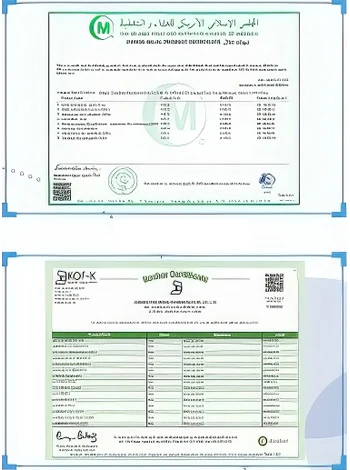



Thermal Decomposition Reaction of Sodium Chlorate and Its Products
The Thermal Decomposition of Sodium Chlorate An Overview
Sodium chlorate (\(NaClO_3\)) is a widely used chemical compound, primarily known for its applications in the production of herbicides and explosives. However, one of the most intriguing aspects of sodium chlorate is its behavior when subjected to heating, resulting in a complex thermal decomposition reaction. Understanding this reaction is crucial for both industrial applications and safety considerations.
The Thermal Decomposition Reaction
When sodium chlorate is heated, it undergoes a decomposition reaction, which can be represented by the following chemical equation
\[ 2 \, NaClO_3(s) \rightarrow 2 \, NaCl(s) + 3 \, O_2(g) \]
In this reaction, two moles of solid sodium chlorate decompose to produce two moles of solid sodium chloride (\(NaCl\)) and three moles of gaseous oxygen (\(O_2\)). This reaction typically occurs when sodium chlorate is heated to temperatures above 200 °C (392 °F).
Mechanism of Decomposition
The thermal decomposition of sodium chlorate is an endothermic reaction, meaning it absorbs heat from the surroundings. As the temperature increases, the chlorate ions (\(ClO_3^-\)) begin to break down. Initially, the sodium chlorate compound loses oxygen while forming chlorate radicals (\(ClO_2\)), which subsequently stabilize into sodium chloride and free oxygen gas. The release of oxygen is a vital aspect of this reaction, contributing to the oxidative potential of sodium chlorate.
sodium chlorate heated equation

Industrial Applications and Implications
The decomposition of sodium chlorate is relevant not only in laboratory settings but also in industrial applications. For instance, the oxygen generated from this reaction can be utilized in various oxidation processes, including the production of chemicals and wastewater treatment. Moreover, due to its explosive nature when subjected to certain conditions, the understanding of sodium chlorate's thermal behavior is critical for safety protocols in industries that handle this compound.
Sodium chlorate is also used in the production of chlorine dioxide, a bleaching agent and disinfectant. The knowledge of how sodium chlorate decomposes can help in optimizing production processes, ensuring both efficiency and safety.
Safety Considerations
While sodium chlorate serves many beneficial purposes, its thermal decomposition poses serious safety risks. The generation of gaseous oxygen can significantly increase the risk of fire or explosion when combined with combustible materials. Thus, when storing or handling sodium chlorate, strict safety measures must be adhered to. This includes maintaining appropriate storage temperatures and environments to prevent accidental ignition or decomposition.
In addition, due to its oxidizing properties, sodium chlorate must be kept away from organic compounds and reducing agents, which can lead to uncontrollable reactions. Proper training for personnel who work with sodium chlorate is essential to mitigate risks associated with its thermal decomposition.
Conclusion
In conclusion, the thermal decomposition of sodium chlorate is a significant chemical reaction that highlights the compound’s importance in both industrial and laboratory settings. The straightforward reaction of sodium chlorate releasing sodium chloride and oxygen upon heating underscores both its utility and the potential hazards associated with its use. Understanding this reaction, its mechanism, applications, and safety precautions are pivotal for anyone working with sodium chlorate. As we continue to explore the properties of such compounds, we pave the way for innovative applications while ensuring safety and responsible handling within various industries.
-
Why Sodium Persulfate Is Everywhere NowNewsJul.07,2025
-
Why Polyacrylamide Is in High DemandNewsJul.07,2025
-
Understanding Paint Chemicals and Their ApplicationsNewsJul.07,2025
-
Smart Use Of Mining ChemicalsNewsJul.07,2025
-
Practical Uses of Potassium MonopersulfateNewsJul.07,2025
-
Agrochemicals In Real FarmingNewsJul.07,2025
-
Sodium Chlorite Hot UsesNewsJul.01,2025










